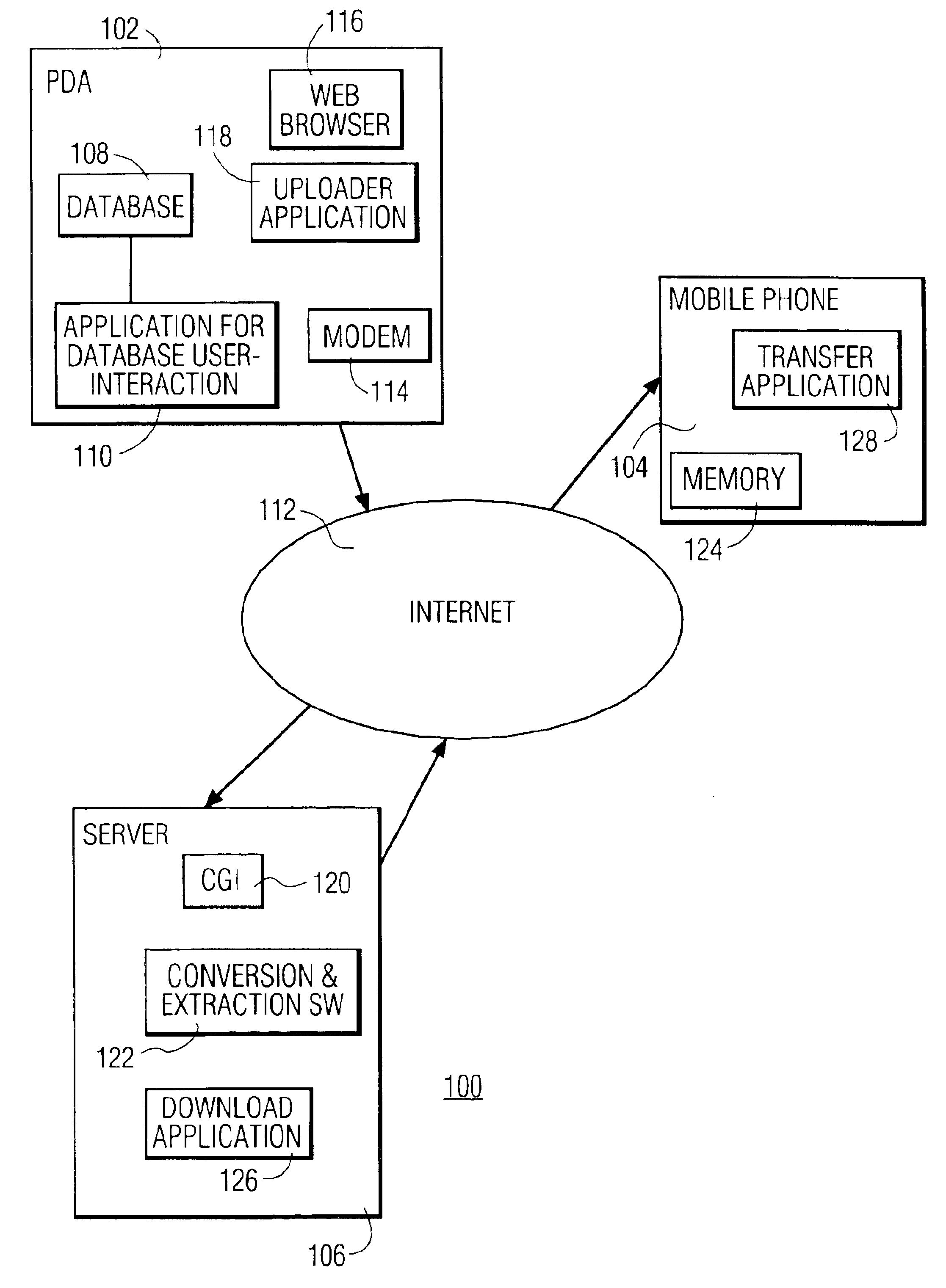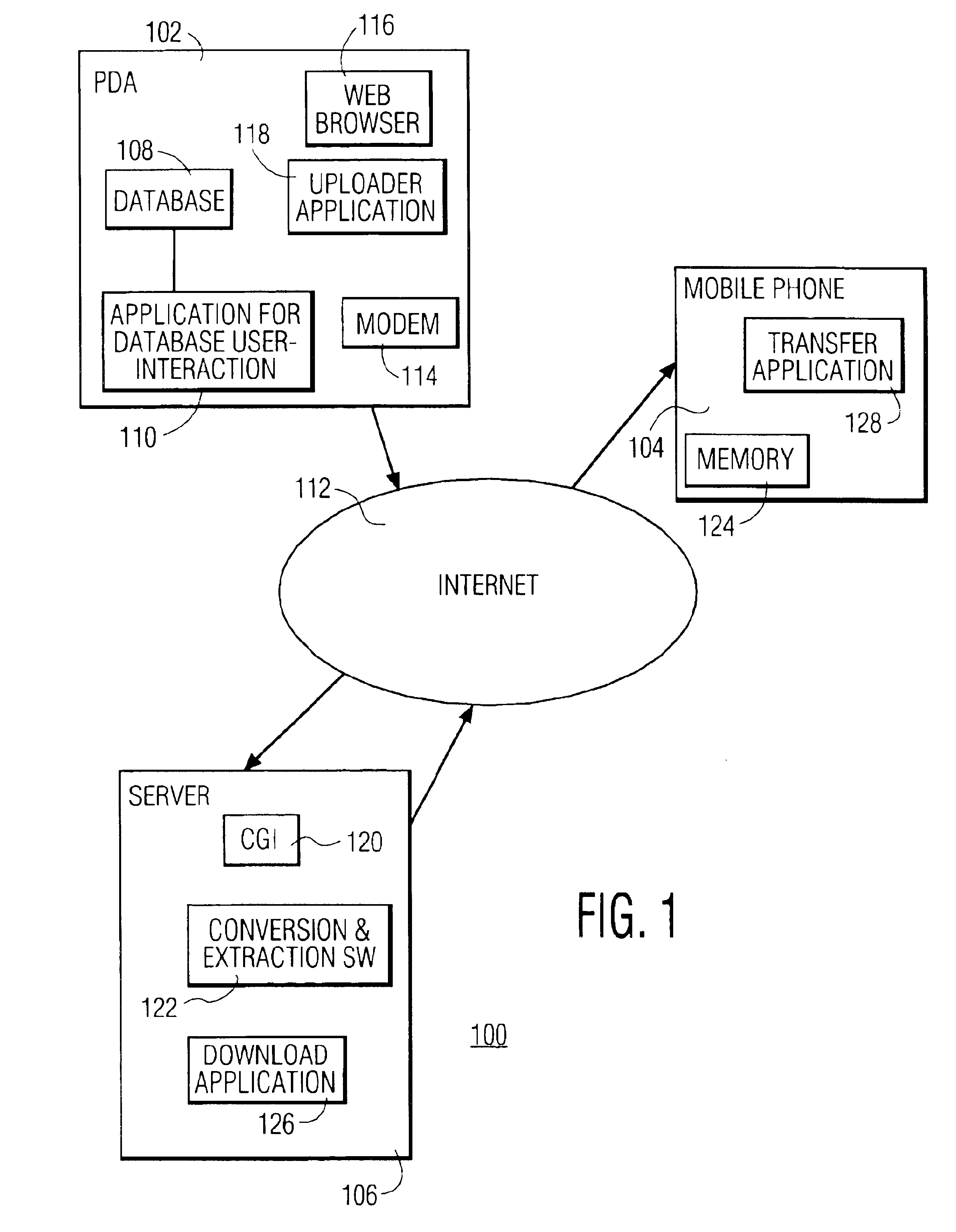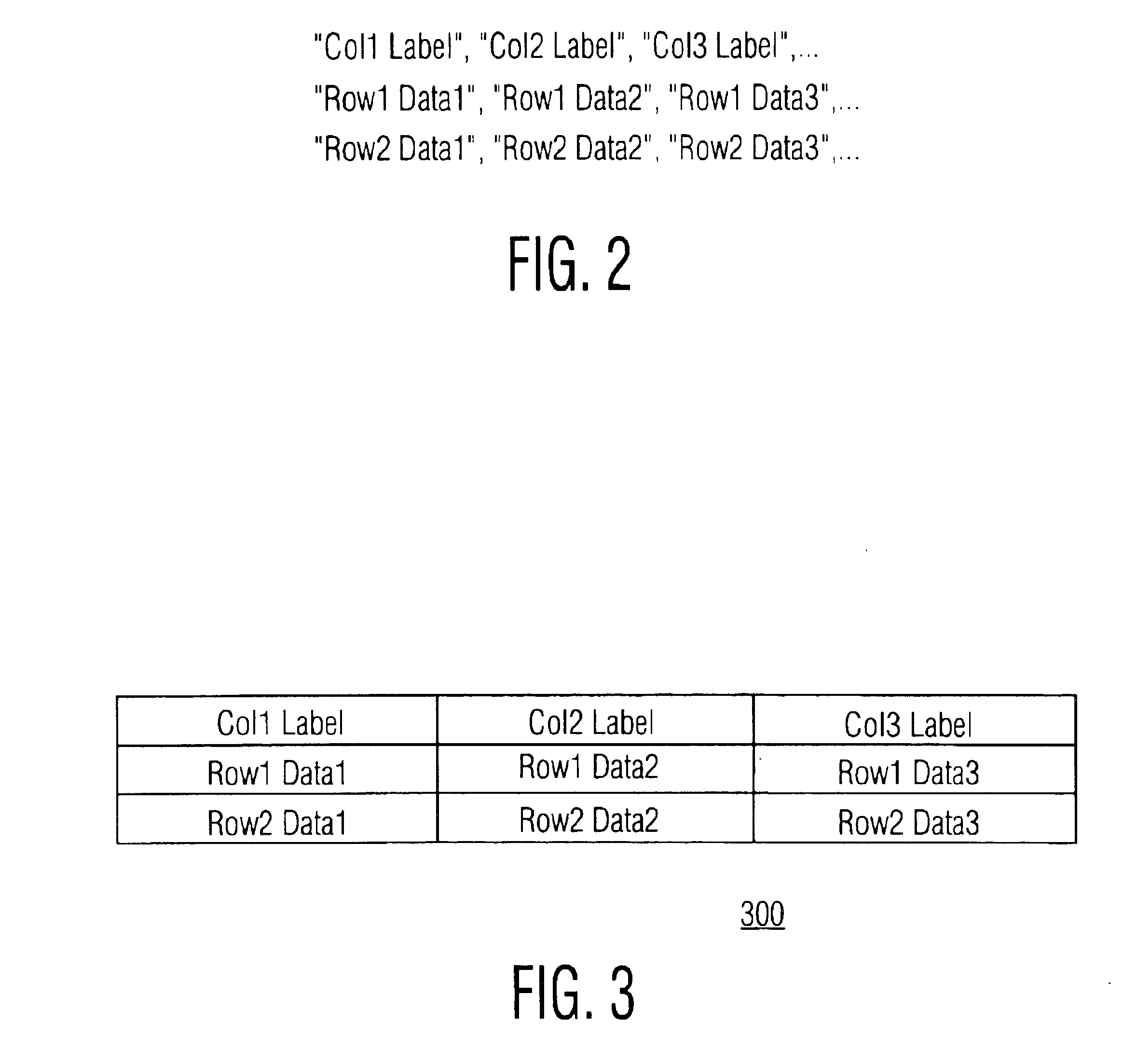[0009]A first
advantage relates to distribution to multiple clients. Once the data has been uploaded to
the Internet server it can more easily and selectively be downloaded to multiple clients, with the necessary conversion to different formats. Moreover, the formats for the various clients can be changed as time goes on, without affecting the
software on the
original device. It is easier because the need to connect the source device to each of the clients is removed.
The Internet server can store a copy of the data for an
indefinite period, as well as track which clients have had an updated copy of the data. Therefore next time a
client requests the data, i.e., next time it connects to the Internet, the appropriate update is sent. This reduces the likelihood that the user “forgets” to update the data on one particular
client, as could be the case if they had to connect the
original device to each of the clients manually: a labor intensive task which would only be done for the purpose of updating. The chance of users using obsolete data is therefore reduced.
[0010]Another
advantage relates to minimizing overhead of device storage, power and maintenance. The process of converting the data from one format to another has a
software overhead for the necessary conversion algorithms,
processing power overhead for the conversion and storage overhead for the resulting output
data file. One might imagine that for each output format supported the
client has to double the available space on the device, in order to store the outputted version of the database (temporarily) until the intended recipient is connected. There is an additional problem with the originating device performing the conversion. As indicated earlier, most devices use a
proprietary format for the storage of data internally, as they can in this way optimize the format of the data to their
software. This could mean that the memory required in the originator increases proportionate to the number of client devices that the manufacturer wishes to support and provide
data format conversion. Because most devices use
mask-programmed
read only memory (ROM) for program storage (as it is none-volatile, low cost and easy to
mass produce), it would mean the
list of conversion formats would be fixed to those that existed at the time that the source device was designed. The alternative would be to increase the cost and software complexity of the device, to allow for storage of the whole code, or at least extensions to it, to be stored in some form of re-writeable storage (
EPROM or FLASH). Whenever software is delivered to an
end user, there is a per user cost for the maintenance. Firstly, the cost and
time overhead for delivering the software to the client and secondly, the need to install the software on the clients
machine. By performing the conversion of the data on the server, only one piece of software needs to be updated. This means that all users use the same software version and same conversion algorithms, reducing versioning problems and issues with support.
[0011]Yet another
advantage relates to the simplicity of connection. It is not always possibly to directly connect two pieces of equipment together. Consider a cellular phone. Often these devices have a hardware interface at the base of the
handset, but these interfaces typically have proprietary data protocol and electrical characteristics. For a PDA or PC to download data to one or more cellular phone, a special cable would need to be purchased. For each additional client, it is conceivable that more cables would be required. The use of the Internet removes this problem. It is now becoming common for devices to support connection to the Internet; via CDPD data over
cellular radio frequencies, modem connection or
Ethernet. If each device is already capable of connecting to the Internet, for general communication purposes, then the two devices effectively have a connection, so the need for additional cables between devices is removed. Any specialized hardware that is required becomes a
shared resource connected to the server.
 Login to View More
Login to View More  Login to View More
Login to View More 


